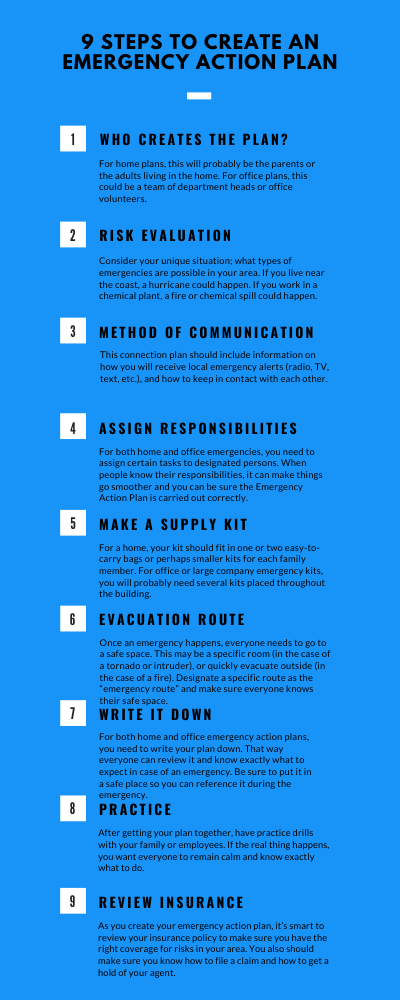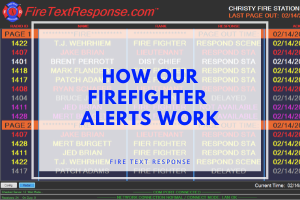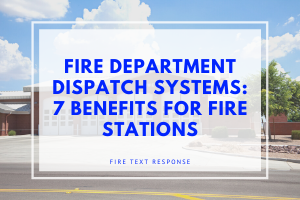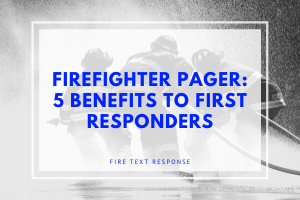Everyone thinks “oh that will never happen to me,” or “things like that don’t happen here”.
Until they do.
Emergency Action Plans (EAP) are necessary for any home or business because life-threatening emergencies are unpredictable. You can’t just assume you’ll avoid every disaster that occurs. That is not a reliable plan. Instead, take the precautionary measures to help plan for and prevent damage to your home or business.
An Emergency Evacuation Plan (EAP) can apply to a variety of circumstances depending on your geographic location. Perhaps you live in a desert prone to wildfires, a city area with a history of flash flooding or a coast during hurricane season. Your EAP may also serve you during threats that have nothing to do with weather. Anyone, anywhere is susceptible to burglars, fires, violence, etc. You can avoid injury, confusion, and property damage by implementing an organized and effective emergency evacuation plan.

What Is An Emergency Response Plan?
An Emergency Action Plan (EAP) can look differently for different circumstances, but is usually a comprehensive document that identifies threats and clearly lays out the action procedures for emergency response. An Emergency Action Plan can not plan for every type of emergency, but it details out basic information to ensure everyone’s safety.
A fire drill at the local elementary school is a great example of an EAP in action. There is a written document that outlines their fire evacuation plan, and every month or two, the school practices with a fire drill. This teaches everyone (administrators, teachers, and students) what to do in case of a fire. This same system should be utilized for EAPs in our home or business.
Well-developed plans and proper training will result in less panic, fewer injuries and reduced damage.
What Should an Emergency Plan Include?
Any Emergency Action Plan (EAP) should include three basic components:
1. A list of possible emergency situations
In order to create a plan, you first have to know what you’re planning for. Some of the essential plans must account for:
- Fire
- Tornado or other storm related situations
- Intruder
- Someone has a medical emergency (i.e. stroke, heart attack, seizure)
Depending on if you are making an Emergency Action Plan for home or office and where you are located, there are other emergency situations you should plan for. Your facility’s geographical location will mean different disasters and threats are more likely to happen. For example, you may be prone to:
- Chemical spills
- Lost child
- Earthquakes
- Floods
- Hurricanes

2. An action plan for all individuals involved
The next step of your EAP should be an action plan. This is an evacuation procedure to get all individuals to a place of safety. This action plan should be as simple as possible and include designated locations away from the home or office for people to gather. The action plan should also include a list of names and their responsibilities during and after the emergency. For example, designate the following responsibilities:
- Who is responsible to grab the family pet?
- Who helps the physically disabled employees?
- Who takes a head count once you are clear of the emergency?
- Which employees are CPR or EMT certified?
- Who brings the emergency kit?
- Who is responsible for gathering emergency documents from the home or office?
Floor map diagrams should be used in the EAP for a home and also prominently posted throughout any office building. Locations of exits, assembly points, and equipment should be clearly marked.
3. Resource Information
Your EAP should include resources you may need in case of a natural disaster or emergency. For example:
- Contact information (name and phone number) for everyone living in the home or working in the office building.
- Phone numbers of emergency personnel (those other than 911).
- The location of the closest church or shelter.
4. Supply List and Location
Your EAP should list any supplies needed to handle emergencies both during and after the danger. Items like water, flashlights, non-perishable food, batteries, radio, fire extinguisher, medical supplies, etc. These items should also be kept nearby in a location that is easy to grab in case of emergency.
9 Steps To Creating an Emergency Response Plan

1. Decide Who Will Create the Plan – for home plans, this will probably be the parents or the adults living in the home. For office plans, this could be a team of department heads or office volunteers.
2. Risk Evaluation – Consider your unique situation; what types of emergencies are possible in your area. If you live near the coast, a hurricane could happen. If you work in a chemical plant, a fire or chemical spill could happen.
3. Determine the Best Method of Communication – This plan should include an emergency alert system or information on how you will receive local emergency alerts (radio, TV, text, etc.), and how to keep in contact with each other. Make sure all family members have emergency phone numbers saved in their cell phone and written on a contact card. Include numbers for each family member, the police station, a nearby hospital and an out-of-area emergency contact.
4. Assign Responsibilities – For both home and office emergencies, you need to assign certain tasks to designated persons. Who is responsible for grabbing the family pet, helping the disabled, making sure everyone is accounted for, alerting local authorities, giving temporary medical attention until professional help arrives, etc. When people know their responsibilities, it can make things go smoother and you can be sure the Emergency Action Plan is carried out correctly.
5. Make an Emergency Supply Kit – For a home, your kit should fit in one or two easy-to-carry bags or perhaps smaller kits for each family member. Items like flashlights, batteries, candles, fire extinguishers, radio, water, non-perishable food, blankets, and first aid kits should be included. For office or large company emergency kits, you will probably need several kits placed throughout the building. Once a year, review what’s in your emergency kit. Replace expired items and update what you’re bringing along as your needs change.
6. Create an Evacuation Route – Once an emergency happens, everyone needs to go to a safe space. This may be a specific room (in the case of a tornado or intruder), or quickly evacuate outside (in the case of a fire). Designate a specific route as the “emergency route” and make sure everyone knows their safe space. Talking about these situations may be troubling to children, so emphasize their ability to protect themselves by knowing their safe space both inside and outside the home. Lastly, determine where you would go if you were asked to evacuate or could not return home, and plan the route you would take to get there.
7. Write it Down – For both home and office emergency action plans, you need to write your plan down. That way everyone can review it and know exactly what to expect in case of an emergency. Be sure to put it in a safe place so you can reference it during the emergency.
8. Practice, Practice, Practice – This is often the hardest part of an effective EAP. Too often we discuss emergency information once and then forget it about it for years. After getting your plan together, have practice drills with your family or employees. If the real thing happens, you want everyone to remain calm and know exactly what to do.
9. Review Your Insurance – As you create your emergency action plan, it’s smart to review your insurance policy to make sure you have the right coverage for risks in your area. You also should make sure you know how to file a claim and how to get a hold of your agent.
Things to Remember
- Remember that the internet, Wi-FI, and even electricity are likely not going to be available in a natural disaster. Make sure you have a hard copy of your EAP and don’t rely on pulling up a PDF on your iPad.
- List the location of important utility shut offs because you may not be the one shutting them off. If you’re injured and you need someone to help you, having digital photos of utility rooms make it easy to locate quickly and easily.
- Be sure to consider any equipment or machinery that must be shut down in an emergency. Write down the name of the person(s) who has responsibility for doing so and keep this updated.
- In an office building, ensure each department reviews and tries their emergency action plan. Often, what looks good on paper doesn’t actually work in real life. Ensure your plan in the home or office have been tested thoroughly and practiced regularly.
- Be sure to include provisions in your plan for visitors to your facility or guests in your home.
- Make sure your emergency plan accounts for different days of the week, nighttime, early morning, alternate seasons, holidays, etc.
FAQs on Emergency Protocols
Yes. According to OSHA, almost every business is required to have an EAP. If fire extinguishers are required or provided, and if anyone will be evacuating during a fire or other emergency, then you are required to have an EAP.
Technically, no. The government can’t require you to have an Emergency Action Plan in your home for your family. It is, however, an invaluable resource to protect the people you love most. A home emergency plan can keep your family members on the same page, help you reach safety and minimize panic and chaos.
It is recommended to conduct exercises and drills to practice all or some elements of the plan on a regular basis. At a bare minimum, this should be done annually or whenever there are changes to the physical layout, materials, or personnel in the home or office.
Your EAP and Your Community
Unfortunately, according to FEMA, nearly 60% of American adults have not practiced what to do in a disaster and only 39% have developed an emergency plan.
Disaster can strike at any time. Because we can’t always determine when or where an emergency will happen, you must be prepared. With an emergency action plan, you can rest easy and know that your family, employees, home, or business is prepared for whatever comes your way.



